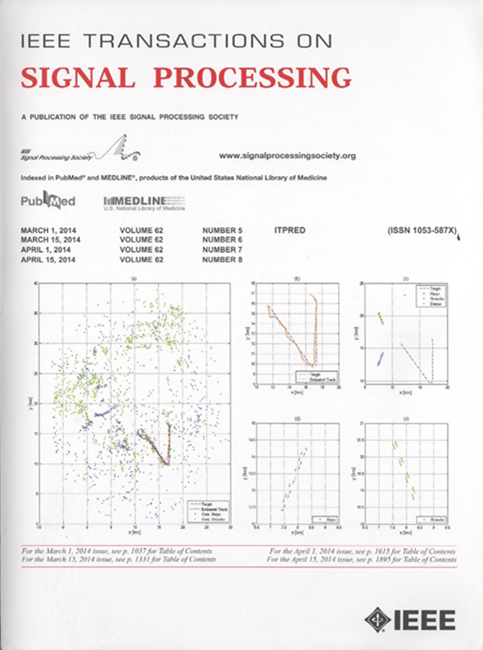Cognitive Radar Subpulses Waveform Design via Online Greedy Search
IF 4.6
2区 工程技术
Q1 ENGINEERING, ELECTRICAL & ELECTRONIC
引用次数: 0
Abstract
This paper proposes a cognitive radar subpulse waveform design (CRSWD) approach including a smart acquirement process of some a prior information and multi-sequences optimization algorithm against multiple mainlobe interrupted sampling repeater jamming (ISRJ). Specifically, the radar first interacts with the environment on a pulse-by-pulse basis to quest for radar survival window (RSW) dynamically. Hence, a novel RSW searching method incorporating the greedy strategy is devised, where a reasonable value function is defined for measuring the anti-jamming and detection capabilities. Based on the estimated RSW information, orthogonal shielding and probing subpulses are strategically positioned for confusing the jammer and then detecting targets, respectively. To this respect, a non-convex optimization problem based on the peak to-sidelobe level (PSL) criterion and peak-to-average ratio (PAR) constraints is formulated for designing orthogonal probing and shielding waveforms with optimized RSW knowledge. A fast iterative methodology based on block coordinate descent (BCD) and majorize-minimization (MM) framework is proposed with the convergence performance ensured. Numerical simulations demonstrate that the proposed framework can effectively acquire jamming-resistant RSW in the presence of multiple targets and ISRJ with different parameters and achieve reliable detection outperforming some counterparts. Experiments are conducted to further verify its engineering feasibility.基于在线贪婪搜索的认知雷达子脉冲波形设计
提出了一种认知雷达子脉冲波形设计(CRSWD)方法,该方法包括一个先验信息的智能获取过程和针对多个主瓣中断采样中继器干扰(ISRJ)的多序列优化算法。具体来说,雷达首先以脉冲为基础与环境相互作用,以动态地寻求雷达生存窗口(RSW)。为此,设计了一种结合贪婪策略的RSW搜索方法,定义了一个合理的值函数来衡量抗干扰和检测能力。基于估计的RSW信息,对正交屏蔽和探测子脉冲进行策略定位,分别迷惑干扰机后探测目标。为此,提出了一个基于峰旁电平(PSL)准则和峰均比(PAR)约束的非凸优化问题,利用优化后的RSW知识设计正交探测和屏蔽波形。在保证收敛性能的前提下,提出了一种基于块坐标下降(BCD)和最大-最小(MM)框架的快速迭代方法。数值仿真结果表明,该框架能够有效地获取多目标和不同参数下的抗干扰RSW,并优于现有框架的可靠检测。实验进一步验证了其工程可行性。
本文章由计算机程序翻译,如有差异,请以英文原文为准。
求助全文
约1分钟内获得全文
求助全文
来源期刊

IEEE Transactions on Signal Processing
工程技术-工程:电子与电气
CiteScore
11.20
自引率
9.30%
发文量
310
审稿时长
3.0 months
期刊介绍:
The IEEE Transactions on Signal Processing covers novel theory, algorithms, performance analyses and applications of techniques for the processing, understanding, learning, retrieval, mining, and extraction of information from signals. The term “signal” includes, among others, audio, video, speech, image, communication, geophysical, sonar, radar, medical and musical signals. Examples of topics of interest include, but are not limited to, information processing and the theory and application of filtering, coding, transmitting, estimating, detecting, analyzing, recognizing, synthesizing, recording, and reproducing signals.
 求助内容:
求助内容: 应助结果提醒方式:
应助结果提醒方式:


